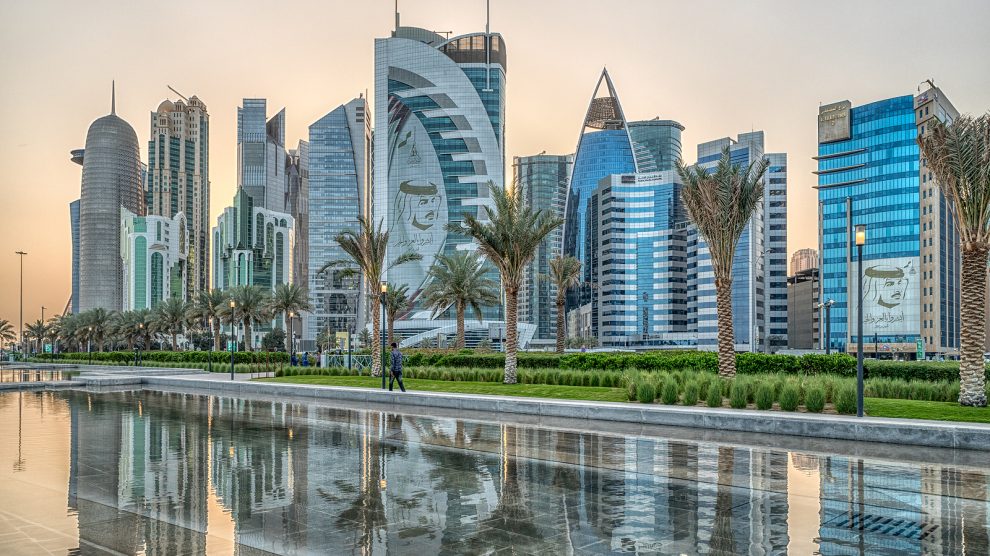The rest of the world needs a gateway into the EU, and CEE can make an increasingly competitive pitch in this sense.
Eastern Europe and the wider CEE area have spent a great deal of the past 30 years focused on a fairly straightforward diagonal, crossing Brussels and reaching New York/Washington.
This was the source of economic growth, foreign investment, cultural development, new institutions, new forms of governance, legislation and in no small part the focus of people’s personal dreams and conceptions of what a good life represents.
- The Singapore model: What CEE and the world can learn
- How the European model can serve as a blueprint for the Trans-Caspian region
- Can Europe’s Digital Markets Act deliver competition without complexity?
Quite simply, individual East European countries’ national dreams were at least in part versions of the American Dream brought upon by European Union integration.
Eastern Europe is no lesser for it: in 1990 the average GDP PPP per capita in Romania was 5,276 US dollars and Poland’s was 6,181 US dollars. In 2023, the former’s was 47,930 US dollars and the latter’s 49,464 US dollars, reflecting a ninefold and, respectively, eightfold increase.
It would be difficult to suggest that turning one US dollar into eight US dollars is bad, despite any problems along the road.
Tangential problems
That said, there’s a problem with the old line: global GDP per capita grew four times over the same time period, while China’s grew 25 times.
That happened from a much lower base, but there’s a difference between eight US dollars and 25 US dollars. This is particularly relevant when it comes with only limited technological convergence with the West: for better or worse Eastern Europe is not competing for world leadership in terms of AI champions, satellite systems, financial innovations, chip production, electric cars, biomedical research centres, nor is it doing doing particularly well in the, grantedly somewhat arriviste, habit of putting stuff on the Moon.
In other words, the consumer economy which Eastern Europe adopted may not necessarily be that great at creating the sources of competitive advantage that might deliver growth in the future. That would not be much of a problem unless the current sources of growth, namely integration into Western supply chains and significant consumer demand, wouldn’t be dwindling as a source of growth just as the main competitive advantages of Eastern Europe in terms of wage differentials and a relatively young and well-educated population begin to become a thing of the past.
Reinvention and the new diagonal
Luckily enough for Eastern Europe, the world is not composed solely of Europe and North America even if it might very well have seemed like that in 1990.
Back then, United States GDP stood at 5.6 trillion US dollars and what is now the euro area stood at 5.91 trillion US dollars. Global GDP stood at 22.8 trillion US dollars, meaning that what is colloquially known as ‘the West’ comprised over 50 per cent of the total. Add Japan and it would have been over 65 per cent.
Today, it’s 40 per cent and falling, with China alone accounting for 17 per cent at US dollar rates and almost 19 per cent at US dollar PPP rates. By 2030, India will become the world’s third largest economy. In other words, it’s time to consider a new diagonal—not necessarily as competition to the old (Eastern Europe is culturally, strategically and militarily integrated with the West and this is and will continue to be great news) but at least as a much-needed extension in order to thrive amid new global realities.
That diagonal stretches from ASEAN to the Gulf states and, hopefully, back to Eastern Europe. The reason is quite simple: each has positioned itself for growth. Whether it’s Japanese FDI, Chinese investment, Western companies’ Alt-Asia supply chain reorganisation or simply the momentum of a gigantic market, ASEAN is a giant in its own right and growing fast.
Meanwhile, the Gulf has positioned itself to be the hub of the Global South’s flows of goods and finance, becoming almost a pure play for Global South economic growth. In other words, it’s reasonable to say that these two points have the highest exposure to the fastest growing economies, demographics, rates of urbanisation and industrialisation.
The new point on the block
Eastern Europe can position itself on this diagonal to tap into that much needed economic velocity. The rest of the world still needs a gateway into the EU, and CEE can make an increasingly competitive pitch in this sense.
That means Eastern Europe should advance itself as a logistical hub for goods travelling from ASEAN through the Gulf states, as a recipient of foreign direct investment for companies which want to sell to the European Union from the inside, a source of higher technology imports for suppliers in ASEAN and in no small part a secondary financial market through which growing assets can be diversified.
The first step for diplomats, business leaders and politicians alike is to understand that accessing hubs such as Dubai, Doha or Singapore might in the near future be as important as Brussels or New York, be it in terms of diplomatic missions or export promotion offices.
Each country in Eastern Europe will have its own path forward from that, but if the region as a whole is to cross the economic path forward, it’s time to look both ways.
Unlike many news and information platforms, Emerging Europe is free to read, and always will be. There is no paywall here. We are independent, not affiliated with nor representing any political party or business organisation. We want the very best for emerging Europe, nothing more, nothing less. Your support will help us continue to spread the word about this amazing region.
You can contribute here. Thank you.



Add Comment